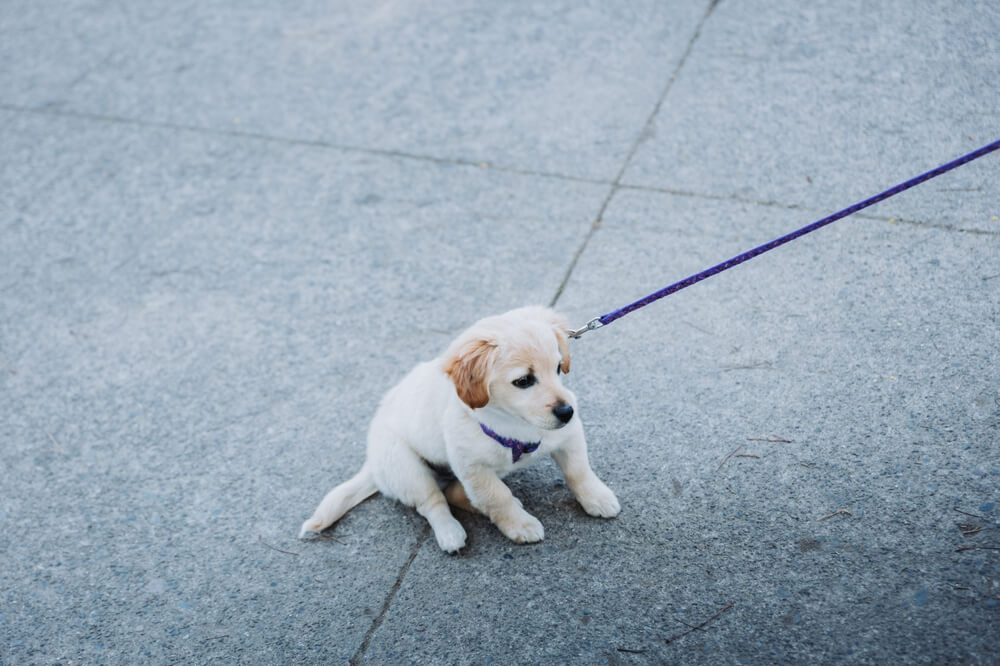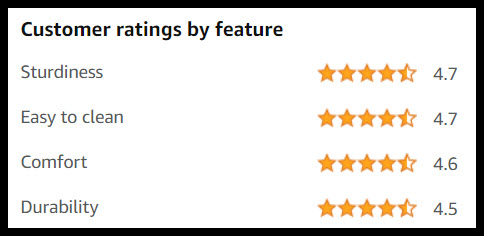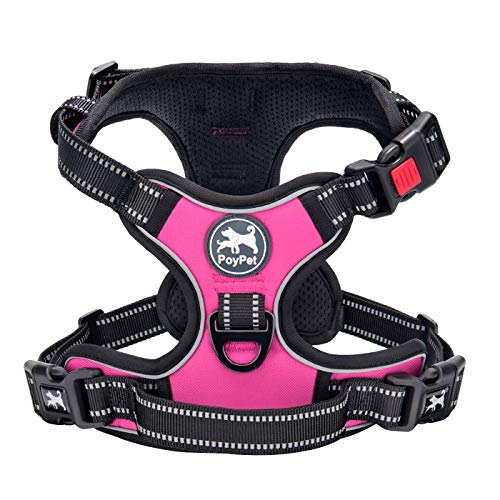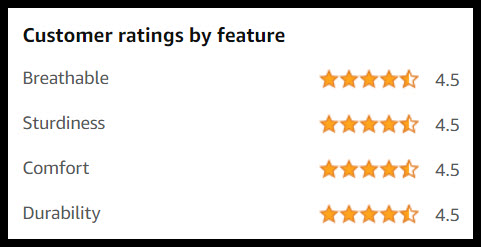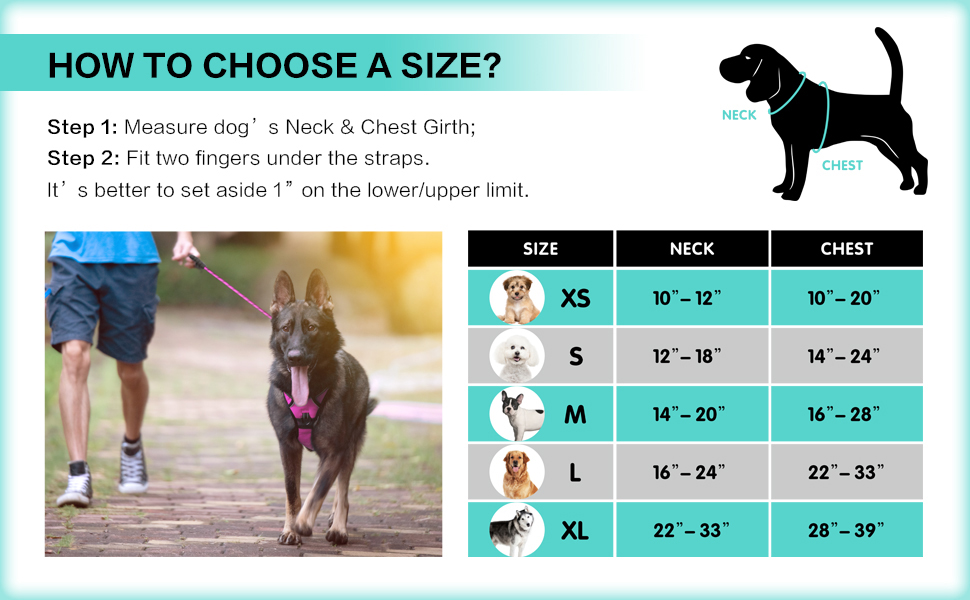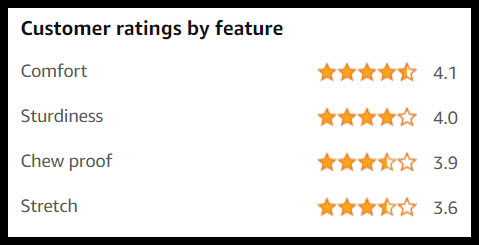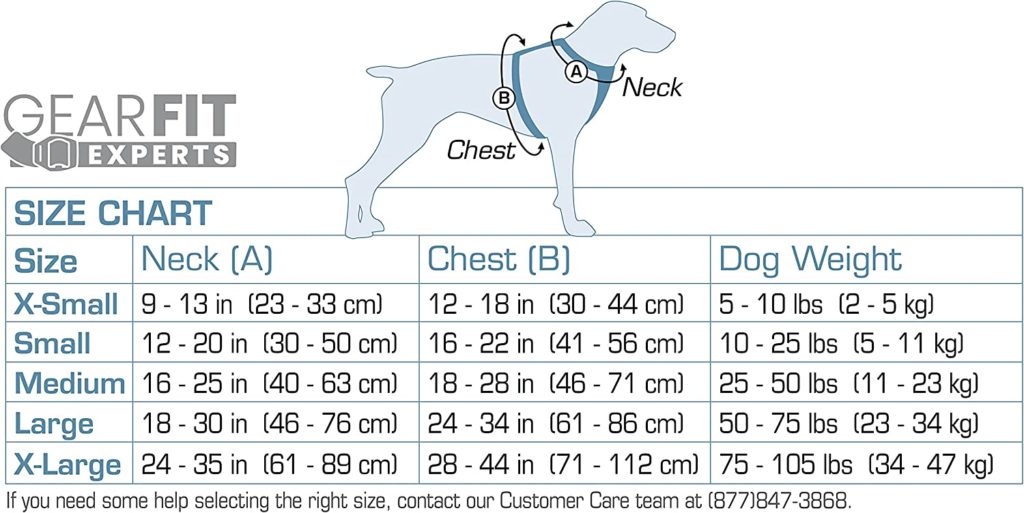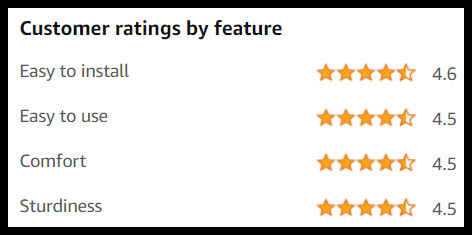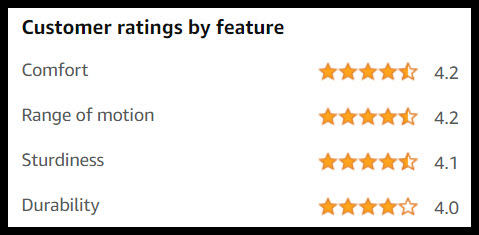If you’re here there’s likely a number of items on your new puppy checklist. With any purchase for a puppy you likely have some concerns:
- Will it fit right?
- Will it last?
- Will it do its job?
- Will it hurt my puppy?
A puppy harness is no different.
To help answer these questions and make sure that you’re able to find the right harness for your puppy, we asked our veterinary advisor Dr. Jennifer Coates to review all of the major harnesses on the market.
Dr. Coates chose the RUFFWEAR Front Range Dog Harness (you can also check out our full in-depth review of the front range dog harness) as the top overall choice because of its versatility, durability, and ease of use.
While that’s Dr. Coates’ top pick, she also shares her top tips for selecting the right harness for you puppy, some considerations for why a puppy harness may not be right for you pup, and she also selected the best harnesses for a variety of specific use cases, including.
The 5 Best Puppy Harnesses
- Best Overall – RUFFWEAR Front Range Dog Harness
- Best Budget – PoyPet No-Pull Dog Harness
- Best for Small Puppies – Kurgo Dog Harness
- Best for Training – Rabbitgoo Dog Harness
- Best Adjustable – PetSafe 3-in-1 Dog Harness
The 5 Best Puppy Harnesses Compared
Below are the top picks from our veterinarian, Dr. Jennifer Coates. Compare the ratings and key features of each of the harnesses to decide which one is the best puppy harness for your dog.
| Vet’s Picks | Model | Rating | Leash Attachment | Adjustable Handle Length | Front, Mid, Rear, or Whole Body |
|---|---|---|---|---|---|
| Best Overall | RUFFWEAR, Front Range Dog Harness | front | |||
| Best Budget | PoyPet No Pull Dog Harness | front | |||
| Best for a Small Puppy | Kurgo Dog Harness | front | |||
| Best Training | rabbitgoo Dog Harness | front | |||
| Best Adjustable | PetSafe 3 in 1 Dog Harness | mid |
*Ratings are on a scale of 1 to 5 and based on reviews, feedback, and opinions of actual customers
In This Article
Who Should Buy a Puppy Harness
- Harness vs. Collar – The biggest question in whether a puppy harness is the right choice for your dog is really whether you prefer a harness or a collar for your puppy. There are varying schools of thought among trainers and veterinarians on collars vs. harnesses. Many trainers who favor collars will recommend harnesses because puppies have fragile bones and necks.
- You’re training your puppy or dog to walk on a leash. A harness can be a great training tool if your pup is new to walking on a lead. With the lead attached to the front of the harness, the harness gently guides your dog back to you when she tries to pull herself forward.
- You have a very strong or large dog. Some puppies are surprisingly strong. Large, strong dogs also benefit from using a harness. As untrained dogs grow rapidly they can be very difficult to keep restrained without pulling them back (which can be bad for their neck if you’re using a collar).
Who Should Not Buy a Puppy Harness
- Collar vs. Harness – The flip side is that many trainers feel that a collar is a better training tool for things like walking your dog. Dogs pulling aggressively on harnesses can also cause physical issues for growing puppies. If you do opt for a collar and you’re not sure how tight the collar should be sure to use our dog collar size chart to select the right sized collar.
If you’re still on the fence in terms of whether to choose a harness, a collar, or a combination for your puppy below is a video overview from certified dog trainer, coach, and author Saro Boghozian:
And, if you are looking for a harness, below are some additional tips for making the right call from our vet advisor Dr. Coates.
How to Choose the Right Puppy Harness
Puppy harnesses need to be able to hold up to all that young dogs can throw at them including chewing, pulling, and general craziness.
Puppies can also be escape artists so it’s essential that their harnesses are:
- Well-designed
- Sturdy
- Sized appropriately
- Comfortable
- Able to prevent pulling (to help with training)
- Adjustable
Adjustability is especially important if you want a harness to grow with your puppy.
The harnesses recommended here are have a number of key qualities you want to look for in a harness, including:
- Being made from quality materials
- Having a wide range of sizes and good sizing guides
- Being adjustable for a precise fit
- Being well-padded and having other measures to ensure a dog’s comfort
A harness with a leash attachment point at the front of the chest is also ideal for training a dog not to pull.
Talk to friends and family who are pet parents to learn what types of puppy harnesses have worked well for them.
Your veterinarian or dog trainer can also point to any features that might be ideal based on your dog’s age, size, and other important considerations.
Closely read product descriptions to avoid unpleasant surprises. Looking at customer reviews posted on trusted sources can give you an idea of how satisfied pet parents are with their purchase as well.
How Much Does a Puppy Harness Cost?
Between $15 and $50
Puppy harnesses cost roughly $25 to $50, but tend to run closer to the $15-30 range, depending on the style of harness, the size harness you’re buying (puppy harnesses obviously tend to run smaller and cheaper), what material they’re made from, and what other functions the harness may feature.
Budget-friendly harnesses are a no-frills option that is typically effective and constructed well. A more expensive dog harness option often features tougher materials, pouches for storage, additional points of adjustment for a more customized fit, or maybe outfitted with a grab handle and extra leash attachments.
Our Methodology: Why Trust Pet News Daily
“I chose the top five puppy harnesses using the knowledge I’ve gained from the veterinary profession, as well as from my personal experience with pet parents. Ask other dog owners and your veterinarian for suggestions in picking the right harness. Also, check out reviews from other customers that have purchased and used the no-pull dog harness you’re considering getting.” – Dr. Jennifer Coates, DVM
Buying Guide: Finding the Perfect Fit
When it comes to selecting a puppy harness for your furry friend, there are a few key points to keep in mind. From material and fit to style and safety, finding the perfect harness for your pup can be a daunting task. But fear not! This guide will provide you with the information you need to make an informed decision and ensure that your pup is comfortable and secure when out and about.
What Makes a Good Step-In Harness?
First, let’s discuss what makes a good puppy harness:
- A quality puppy harness should be made from comfortable and breathable material that can stand up to regular wear and tear.
- The straps should fit snugly around your pup’s body without being overly tight or restrictive.
- A design with adjustable straps so you can customize it to fit your pup’s size and shape.
When it comes to safety features, there are a few key things to look for in a puppy harness. Reflective straps and bright colors can help you spot your pup easily in low-light conditions, while emergency clips can allow for quick and easy removal of the harness in case of emergency. These features can provide peace of mind and ensure that your pup stays safe and secure while on the go.
What Makes a Bad Puppy Harness?
When selecting a puppy harness, there are also some things that you should avoid:
- Metal buckles or hardware can be uncomfortable for your pup and could cause them to harm if they snag on something as they’re running around.
- Sharp edges or points in the harness design could cause discomfort for your pup or even injure them if they get snagged on something.
- Weak seams or poorly-constructed straps as these can come apart easily and leave your pup unprotected when they’re out on their adventures.
Specific Puppy Harness Brands to Avoid
To avoid poorly-made puppy harnesses, you can cross-reference the list of key factors to consider with specific brands. For example, our testing and experience have shown that Puppy-Lite Harnesses often have weak straps and easily-disengaged buckles that can fail during play or exercise. Similarly, Puppy-Pup Harnesses are known for their metal buckles, which can cause discomfort or even injury to sensitive pups. By avoiding brands like these, you can ensure that you get a high-quality harness that will keep your pup safe and comfortable.
Alternatives to Puppy Harnesses
In addition to puppy harnesses, there are several other options for protecting your pup while out and about.
Collars are a traditional choice, but they may not be suitable for pups with neck or trachea issues.
In such cases, you may want to consider creating a DIY harness using materials you have at home, such as an old t-shirt or towel.
These can be secured with safety pins and string, and while they may not be as durable as store-bought harnesses, they can provide a cheap and effective alternative.
Types of Dogs Prone to Neck and Trachea Issues
When selecting a harness or collar, it is important to consider the breed of your dog and its potential health concerns.
Smaller breeds with thin necks, such as Chihuahuas and Yorkshire Terriers, may be more susceptible to neck and trachea issues due to their size.
Additionally, breeds with brachycephalic skulls, such as Bulldogs, French Bulldogs, Pugs, and Shih Tzus, may be more prone to trachea issues due to the structure of their skull.
By keeping these factors in mind, you can choose a harness or collar that will be safe and comfortable for your pup.
How Do Dogs Start to Experience Neck and Trachea Issues?
Dogs can develop neck and trachea issues from a variety of causes, including:
- Age-related changes in their bones and muscles.
- Brachycephalic breeds like Pugs, Bulldogs, and Boston Terriers are particularly vulnerable due to the structure of their skulls, which can put extra pressure on the trachea.
- The use of collars or harnesses that are too tight, can cause discomfort and even injury.
Tips for How to Fit and Put On Puppy Harnesses
When fitting and putting on a puppy harness, it is crucial to ensure that it fits your pup correctly. The harness should be snug without being restrictive, and you should be able to fit two fingers between the harness and your pup’s body.
Additionally, make sure that all buckles and straps are secure and that there are no sharp edges or points that could cause harm. Once the harness is fitted properly, it is important to gradually introduce it to your pup by taking them on short walks with it.
Reward them with treats and positive reinforcement, and gradually increase the length of time they wear the harness as they become more comfortable with it.
Ultimately, choosing a good puppy harness for your pup is a serious matter that requires care and consideration.
The Best Puppy Harness Reviews
1. Best Overall – RUFFWEAR Front Range Dog Harness
- Comes in 5 sizes. xx-small fits dogs with a girth of 13-17 inches.
- Customizable fit with 4 points of adjustment
- Foam padded for comfort
- 2 leash attachments including on the front of the chest for no-pull training
- Easy on and off
- More expensive than comparable options
- Some customers complained that the harness is rough on their dogs’ under-arms
- Plastic clasps instead of metal
The RUFFWEAR Front Range Dog Harness (read our review of Ruffwear Front Range Dog Harness as well) is our top overall pick for a puppy harness, but it may not be the best fit for you and your puppy. Let’s take a closer look at the harness.
Here are some fast facts about the harness:
- Comes in 5 sizes. xx-small fits dogs with a girth of 13-17 inches.
- Many colors to pick from
- Customizable fit with 4 points of adjustment
- Reflective
- Lightweight
- Foam padded for comfort
- 2 leash attachments including on the front of the chest for no-pull training
- Easy on and off
There are also some nice videos RUFFWEAR has created to give more of a sense of the harness (the video is put together by the company obviously so you want to take it with a grain of salt):
As well as a video walk-through of how to fit and adjust your dog’s harness:
(As a dog owner who finds harnesses in general weirdly rubix-cube-esque I find these kinds of videos helpful).
As you pick up and feel the harness it’s definitely hefty and well-padded. Another thing to keep an eye on for a puppy harness is one that’s highly adjustable (as even smaller puppies will grow, and bigger puppies will grow fast). RUFFWEAR has 5 sizes and 4 points of adjustment so it’s a definite winner from that standpoint.
Overall the harness gets strong reviews (the strongest among all of the puppy harnesses we considered and tested):
But some of the negative reviewers mention specific issues with the harness, including:
- Tears early in the life of the harness
- Plastic clasps instead of metal
- The harness rubbing uncomfortably under their dog’s arms
2. Best Budget – PoyPet No-Pull Dog Harness
- 5 sizes and 26 color options
- Stretchable straps and padded for comfort
- Easy on/off buckles
- Top handle for extra control
- Some customers report issues with the fit – particularly for very small or very large puppies
- Some customers complain that the buckles particularly rip off after a couple of months of use, especially for larger dogs that are inclined to pull
The PoyPet No-Pull Dog Harness is our best budget pick. It has 5 sizes and 26 (!) colors to choose from, and ranges ~$15-$22 depending on the size and color you pick which is a very low-end range in terms of price.
Some fast facts:
- 5 sizes and many colors to pick from
- 4 adjustment points to ensure a good fit
- Lightweight
- Easy on/off buckles
- 2 leash attachments including on the front of the chest for no-pull training
- Reflective
- Stretchable straps and padded for comfort
- Top handle for extra control
The harness definitely doesn’t feel as robust as something like the RUFFWEAR option, but that is reflected in the price (the largest RUFFWEAR size is more than twice as much as the PoyPet) and there is padding to the PoyPet harness.
Overall the harness gets solid reviews despite the lower price:
The negative reviews tend to center around a few core issues:
- The harness not fitting quite right, particularly for very large or very small dogs
- Not holding up after a few months to a year of use (particularly issues with the buckles)
- The “no pull” mechanism of the harness is easy for some dogs to circumvent
Here is a hands-on review of the harness:
As well as the PoyPet sizing chart (although do note some customers claimed to have issues with sizing even when following the size chart):
All of that said many customers had no issues with the fit or durability of the harness, and it’s a slick-looking harness that will be a good budget-conscious option for many pet parents.
3. Best for Small Puppies – Kurgo Dog Harness
- 5 sizes. X-small fits dogs with a neck circumference of 9-13”, a girth of 12-18”, and that weigh just 5-10 pounds.
- Good fit guide
- Includes seat belt attachment
- 2 leash attachments including on the front of the chest for no-pull training
- Lifetime warranty
- Some customers complain about the sturdiness of the front attachment
- Certain dogs have issues with the fit – that the harness scrunches and/or issues with the fit around their dog’s neck
- The adjustments can be a bit difficult to make, particularly if you need to make multiple adjustments at different points of the harness
The best harness for small puppies is the Kurgo Dog Harness. The Kurgo harness has 5 sizes with the extra small fitting puppies all the way down to a neck circumference of 9-13”, a girth of 12-18”, and that weigh just 5-10 pounds.
Let’s look at some fast facts:
- 5 sizes. X-small fits dogs with a neck circumference of 9-13”, a girth of 12-18”, and that weigh just 5-10 pounds.
- 5 adjustment points to ensure a good fit
- 3 colors to pick from
- Good fit guide
- Lightweight
- Easy on/off buckles
- Reflective
- Includes seat belt attachment
- 2 leash attachments including on the front of the chest for no-pull training
- Lifetime warranty
The Kurgo harness is a bit narrower and longer than some of the other harnesses, coming all the way up to the pup’s neck. It definitely doesn’t have the heft and padding of a model like the RUFFWEAR harness.
It does feature an attachment on the front of the chest to help with no-pull training and keep your puppy’s trachea safe.
The Kurgo is rated quite a bit lower overall than the RUFFWEAR harness, and scores particularly low with customers on “stretch” and “chew-proof”:
Complaints from customers who had issues with the harness included:
- Issues with the front attachment being weak / wearing out quickly with use.
- Issues with the fit (overall with the harness sagging, and particularly around the neck)
- Issues with adjustments being tricky
Here is the Kurgo harness overview video (from Kurgo, so take it with a grain of salt):
And here is the size chart for the harness:
While there are negative reviews, a number of customers love their Kurgo harness, and for small puppies, it’s a strong option to fit especially small puppies.
4. Best for Training – Rabbitgoo Dog Harness
- 2 leash attachments including on the front of the chest for no-pull training
- Top handle for extra control
- Top and bottom panels padded for comfort
- Easy on/off buckles
- Unhappy customers complain about the durability of the harness and it wearing quickly
- The sizing of the harness can be difficult, and for a dog with the wrong fit the harness can slip off
The best puppy training harness is the Rabbitgoo Dog Harness. The presence of multiple leash attachments, as well as a top handle for extra control, make the Rabbitgoo Harness especially well-suited for training.
Some fast facts:
- 4 sizes
- 4 adjustment points to ensure a good fit
- 2 leash attachments including on the front of the chest for no-pull training
- Top handle for extra control
- Top and bottom panels padded for comfort
- Many colors to pick from
- Lightweight
- Easy on/off buckles
- Reflective
The Rabitgoo harness has relatively strong ratings for the price:
Customers who had issues with the harness had two common complaints:
- Durability – the harness wore quickly with the use
- Fit – multiple customers complained that their dog could wriggle out of the harness
Rabitgoo offers multiple videos to show you how to wear the harness:
As well as how to adjust the harness:
And here is a hands-on video review of the Rabitgoo:
All in all, the Rabitgoo is an attractive harness with solid padding and helpful attachments for training. It’s also reasonably priced, and while some customers have issues many are very happy with the harness.
5. Best Adjustable – PetSafe 3-in-1 Dog Harness
- 5 points of adjustment for a perfect fit
- Lightweight
- Excellent sizing guide available online
- Has a front leash attachment for no-pull training, as well as a standard leash attachment point on the back. Can use 2 point leash for hard-to-train puppies
- Has a handle on the back for extra control or to use as a seat belt attachment for safety in the car.
- Softly padded for comfort
- Customers with larger / stronger dogs complain of the harness breaking when pulled at a run
- Some customers complain of wear and tear after a few weeks/months
When an adjustable harness is your top priority, the best option is the PetSafe 3-in-1 Dog Harness. It offers 5 sizes, 5 points of adjustment (more than most harnesses), and a helpful sizing guide so that you can pick the appropriate harness and adjust it accordingly for the life of its use.
Some fast facts:
- Comes in x-small, small, medium, and large sizes. X-small fits dogs with a neck circumference of 9-14” and a girth of 13-19”
- 5 points of adjustment for a perfect fit
- Lightweight
- Excellent sizing guide available online
- Has a front leash attachment for no-pull training, as well as a standard leash attachment point on the back. Can use 2 point leash for hard-to-train puppies
- Has a handle on the back for extra control or to use as a seat belt attachment for safety in the car.
- Reflective
- Softly padded for comfort
The PetSafe harness is a much more lightweight harness that has relatively thin straps rather than material covering the dog’s chest. The straps have ample padding but obviously, the PetSafe harness won’t feel as robust as some of the other harnesses. That said the lightweight approach makes it much easier to get on and off and to adjust, which is a pain point for many of the other harnesses listed here and for harnesses in general.
The PetSafe harness has decent reviews for the price (but not as strong as the RUFFWEAR or Rabitgoo):
Customers who had bad experiences with the harness mainly pointed to the harness fraying or wearing after limited use, and multiple customers with larger stronger dogs who were “runners” complained that the harness broke when their dog ran or pulled aggressively.
PetSafe offers a video overview of how to use the harness:
As well as how to fit it:
All in all, if you need a lightweight harness with a high rate of adjustability PetSafe is a good option.
Frequently Asked Questions
You can introduce a harness at 8 weeks old (which is the age at which most people bring their puppies home). Make sure you’re using the harness only for training, and depending on the puppy you may want to give them some time to acclimate before jumping into harness training.
Veterinarian Dr. Jennifer Coates selected the RUFFWEAR Front Range Dog Harness for its combination of adjustability, comfort, and durability.
Opinions on whether it is best to train a puppy with a collar or harness vary, but many trainers believe it’s a valuable tool and can save a puppy from neck injuries.
- XX SMALL – Up to 5 lbs.
- SMALL – 10-25 lbs.
- MEDIUM – Up to 55 lbs.
- LARGE – Up to 75 lbs.
- X-LARGE – 75+ lbs.
- XX-LARGE – You have a bear and need a custom job. Just kidding but generally sizing only goes up to XL.
This is a good video overview of how to measure your dog for a harness:
Some trainers and veterinarians express concerns about damage to the back and neck area if a harness isn’t used properly, but generally speaking, if you use the front clip of the harness and are careful with your puppy, they are considered a useful training tool.
Some trainers and veterinarians disagree about this question, but many believe a harness is a better way for a puppy to learn to be led on a leash without risking injury to the neck area of the puppy.
Additional Sources & Resources
For more on dog harnesses, including everything from how to measure your dog for a harness and how a dog harness should fit to the best escape-proof dog harnesses, (read our review of escape-proof dog harness) check out our series of posts:
- The best step-in dog harness
- The best dog lift harness
- The best no pull dog harness
- The best harnesses for huskies
- The best front clip dog harnesses
- The best dog car harnesses
- The Best Service Dog Harness
And our individual harness reviews:
- The Ruffwear Webmaster Dog Harness review
- The Icefang Tactical Dog Harness review
- The Gooby Dog Harness (escape free sport) review
- The Ruffwear front-range dog harness review
- The Rabbitgoo Escape Proof Dog Harness review
And our breed-specific harness guides:
